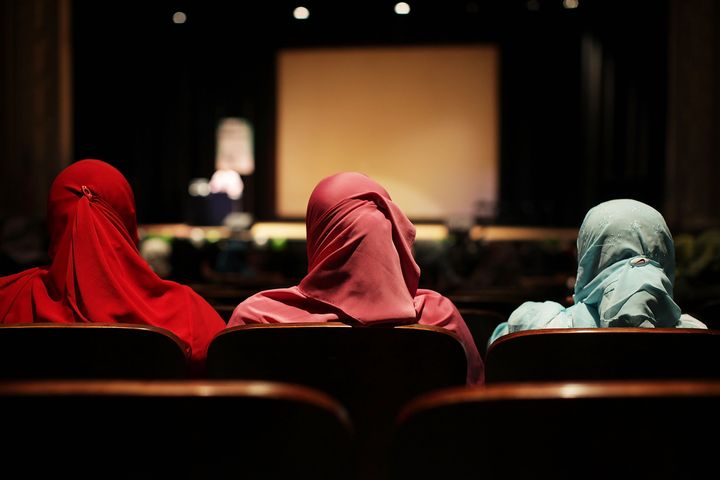
Popular film and television has relied on stereotypical portrayals of Muslims and Arabs since its existence. There is, however, a quiet revolution afoot inside television and film, and the predictable box of the Muslim-as-terrorist is slowly fading. But will this shift make a difference in ending America's growing prejudice toward Muslims?
Neuroscience, a field that has itself been undergoing a quiet revolution, may provide some of the answers. Over the last two years I have been presenting at the Muslim Mental Health Conference on how recent advances in neuroscience and social psychology might help us to understand how anti-Muslim prejudice can be reduced in the media. The project has now morphed into a policy brief as part of the Institute for Social Policy and Understanding's "Navigating a Post 9/11 World: A Decade of Lessons Learned," a series of research papers that seek to set a new direction for America and Muslims globally.
How Stereotypes Change
What we know about stereotyping has evolved considerably over the last 25 years in the wake of the "affective turn" and the use of noninvasive fMRI scans. The affective turn refers to the realization that human behavior is dictated by emotion over and above reason. Neuroscientists can now paint a clear picture of what happens in the brain when someone deploys a stereotype. The vast majority of the time, stereotyping occurs automatically without conscious reflection. It calms the fears and anxieties built up about an "out-group," which is of course conditioned by a complex set of social, educational and other factors.
Neuroscientists have found, after strapping people to fMRI scans to measure changing levels of fear that images of out-groups elicit, that stereotypes are very malleable and capable of changing rapidly. Early theorists of stereotypes knew this all along, such as Walter Lipmann when he pointed out that stereotypes are the result of individuals conforming to situational demands and social customs, and not necessarily the result of deep hostilities held toward a particular "out-group." Stereotyping is an emotional response to a perceived threat to the buildup of stress.
Importantly, neuroscientists have found that the introduction of positive images of "out-groups" does indeed lower levels of fear of the other, and it reforms the hardwired automatic processes. In one study conducted at a predominately white college, students were inundated with a flood of negative images of African Americans seen in ghettos and in gangs. Researchers found a spike in automatic stereotyping toward the entire category of African Americans. The researchers then introduced hundreds of positive images of African Americans seen at churches and in family and professional settings. The introduction of these images resulted in a lowering of fear and a significant drop in the level of stereotyping the students experienced toward African Americans on the whole.
Perhaps the most profound real world example of this research is found in the so-called "Huxtable effect" -- or the capacity of television's "The Cosby Show," to transform white prejudice toward blacks. While the Huxtable family in "The Cosby Show" made it easier for Americans to see blacks in positions of mainstream success and leadership, it did not erase prejudice toward African Americans by any stretch. It did, however, make it less and less acceptable to express prejudice openly in the popular media. During the height of anti-Muslim sentiment over the so-called "Ground Zero Mosque controversy" in August 2010, Katie Couric speculated as to whether a "Muslim Cosby Show" would help lessen prejudice toward Muslims in America. She asked this question at the right time.
The Changing Media Portrayal of Muslims
Not surprisingly, a majority of Americans receive information about Muslims and Islam primarily from the media. As Jack Shaheen, a leading writer on Arab and Muslim media stereotypes has documented, more than 200 movies have portrayed Arabs and Muslims in prejudicial scenes, often when the plot has nothing to do with Arabs or Muslims since 9/11. When Hollywood blatantly excludes multi-dimensional portrayals of Muslims, it can lead to harmful stereotypes in the real world. It also leads to hate crimes and jeopardizes all those who "look Muslim." In a recent report by the Brookings Institution, researchers found that negative media portrayals of Muslims harms our capacity to effectively build citizen diplomacy with Muslims outside of the United States.
Over the last five years, major television dramas such as "Law and Order," "CSI" and "Grey's Anatomy" have begun to introduce Muslim characters -- and when they do, their ratings tend to increase. The now completed show "24" had, by Season 7, reformed the "Muslim-as-terrorist" frame by introducing several positive Muslim characters, including a particularly interesting Muslim imam that offered spiritual consolation to the show's main character, Jack Bauer, when he became critically injured. In ABC's crime drama television series "Bones," Season 5, a Muslim medical Doctor who had served in the Iraq war is introduced. In Showtime's "Sleeper Cell," a Muslim FBI agent infiltrates a terrorist cell and recurs as a leading character throughout the show.
More nuanced Muslim characters that go beyond the stereotypical frames are a good start, yet neuroscience shows that we need significantly more positive and multidimensional content to effectively reduce prejudice. A shift in media portrayals to showing Muslims as emotionally complex, nuanced and humanizing can itself be a catalyst not only for reducing stereotypes about Muslims, but also for improving American citizen diplomacy with Muslims internationally and domestically. A shift in positive images can promote a greater sense of positive identity development for American Muslims, and it will improve our democratic processes by giving the public access to portrayals that further positive and inclusive Muslim-West relations.
